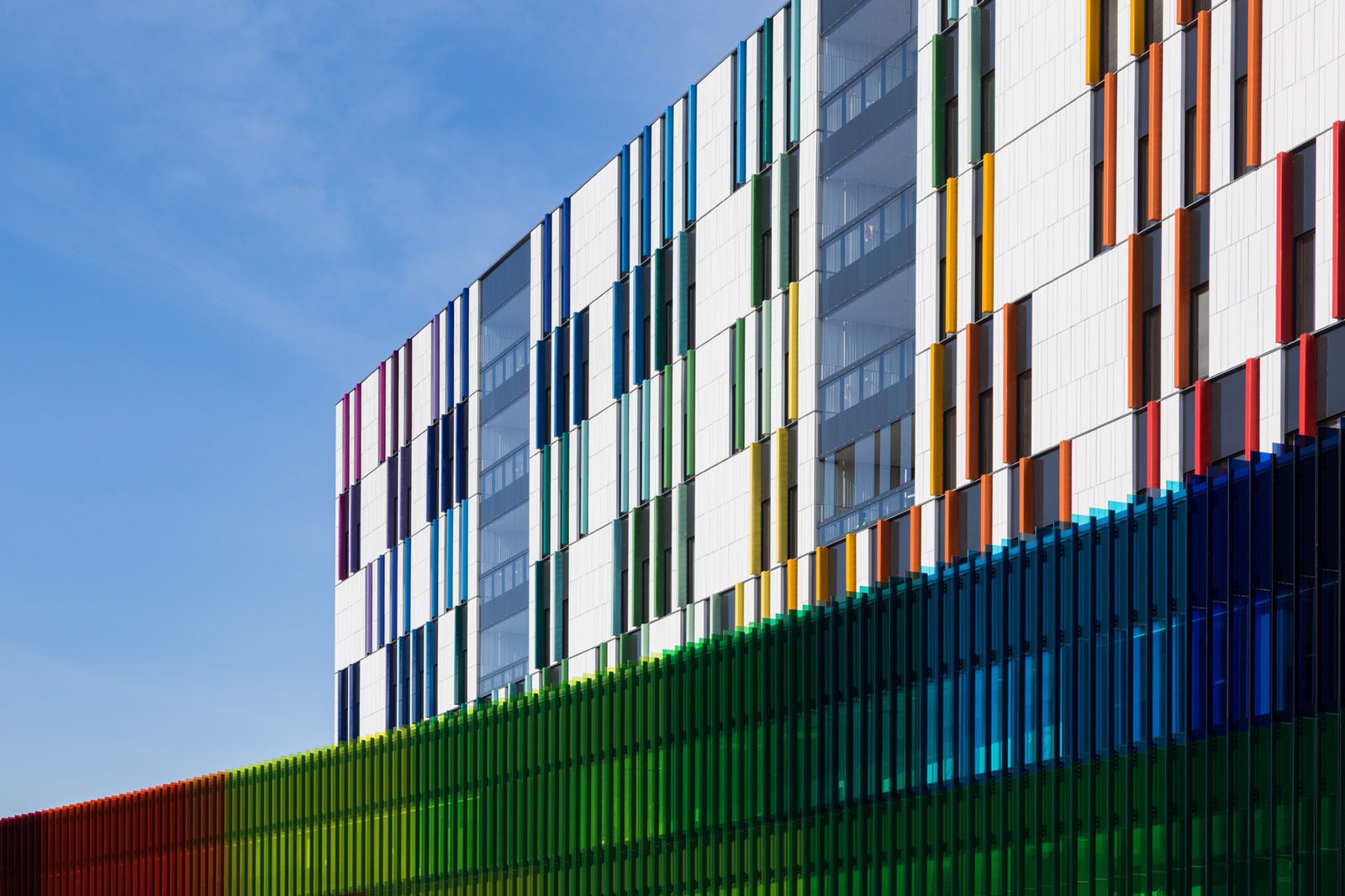Story at a glance:
- Germany-based Agrob Buchtal recently began partnering with Acme Brick, a premier manufacturer of building materials based in Fort Worth, Texas, to distribute ceramic cladding to customers across the southern US.
- When light falls on Agrob Buchtal’s innovative Hytect tiles active oxygen is released, protecting against bacteria and mold. Hytect tiles also neutralize pollutants in the air.
- More than 80% of the raw materials used in Agrob Buchtal’s products are sourced in the immediate vicinity of their production sites.
Ceramic has been used as a building material and sculptural component for thousands of years. Often referred to as terra-cotta—Latin for “baked earth”—ceramic building facades of fired clay remain hugely popular across the globe. While probably best known as the cladding material of early 20th century architectural masterpieces like the Flatiron Building in New York City and Chicago’s Wrigley Building, ceramic facades are making a comeback in both new construction and historic renovations due to their versatile and durable qualities.
“A facade is far more than the protective shell of a building. Its design not only characterizes the building itself but also influences the urban environment,” says Lisa Burling, national sales manager at Agrob Buchtal, a leading manufacturer of ceramic facade systems. The Germany-based company began manufacturing ceramic tile in 1755 and has been perfecting its recipes of mixed clay, feldspar, fireclay, kaolin, and water ever since. With the resurgence in popularity of terra-cotta cladding Agrob Buchtal has been producing ceramic facades for more than 40 years in Schwarzenfeld, Bavaria.
The “Made in Germany” label is consistently associated with a high level of quality and craftsmanship, and Agrob Buchtal’s ceramic facade systems live up to that brand, exporting to six continents and dozens of countries worldwide. The firm recently began partnering with Acme Brick, a premier manufacturer of building materials based in Fort Worth, Texas, to distribute ceramic cladding to customers across the southern US.
“We have an extensive portfolio of products and services for modern and future-oriented building and design,” Burling says. Customers searching for an aesthetically flexible and environmentally friendly alternative to traditional facade materials have an easy solution with ceramic cladding.
Exceeding Regulations
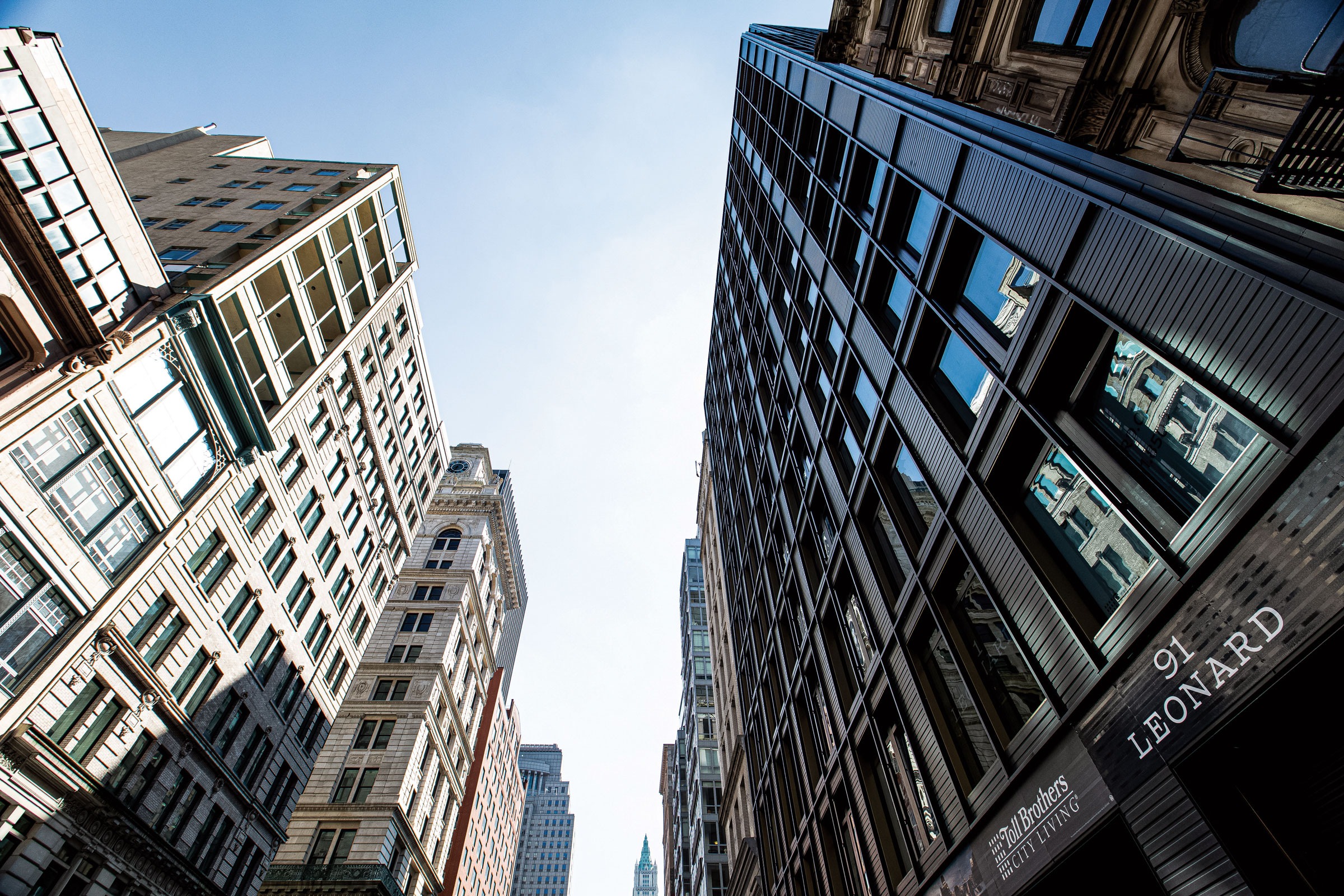
At 91 Leonard Street in NYC, developers used KeraTwin and KeraShape ceramic facade systems to complement the 19th century warehouses and lofts of the surrounding neighborhood. Photo courtesy of Agrob Buchtal
The typical customer for ceramic cladding wants a distinct and attractive facade that withstands both time and weather with little to no maintenance, according to Craig Dudley, sales manager for the Innovative Building Products division of Acme Brick. Burling adds that, for builders and architects looking for the complete package of aesthetics, economic efficiency, and sustainability, ceramic facade systems are perfect.
As local governments raise the bar on design guidelines nationwide, terra-cotta meets or exceeds these regulations by offering a more refined and elegant look than traditional facade materials. Ceramic facades are especially beneficial for historic renovation projects. With renovations surpassing new construction in many urban districts, Agrob Buchtal works with city and county planners to ensure its products align with historic guidelines. “We can custom-match color palettes, surface finishes, and panel sizes for older renovations,” Burling says. “Even if it’s just replacing a single tile, you won’t notice a difference between the new tile and the existing facade.”
Even without specific regulatory guidance many developers choose to harmonize new construction projects with the existing urban environment. At the recently completed 91 Leonard Street condominium tower in New York City, Agrob Buchtal’s KeraTwin and KeraShape ceramic facade systems were utilized by the developers to complement the 19th century warehouses and lofts of the surrounding neighborhood.
How to Install Terra-Cotta Cladding

The KeraShape system balances old and new, as seen here at Duke University. Photo courtesy of Duke University
Ceramic cladding can be installed directly onto the frame of a building or on top of the existing facade, making it ideal for both new construction and renovations. “You can install ceramic panels on practically any base, including ceilings,” Burling says.
Agrob Buchtal’s Omega fastening system utilizes aluminum brackets and fasteners to secure the ceramic panels to the existing structure. Compression springs provide flexibility to the facade structure, preventing any movement or clatter of the panels while carrying the wind load off of the main structure. Joint profiles or spacers secure the panels in place and allow for easy removal.
“Our panels are half the weight of our competitors, about seven to eight pounds per square foot, which means less stress on the building and an installation process that goes about 30% faster,” Burling says.
The Options are Endless—and Less Expensive
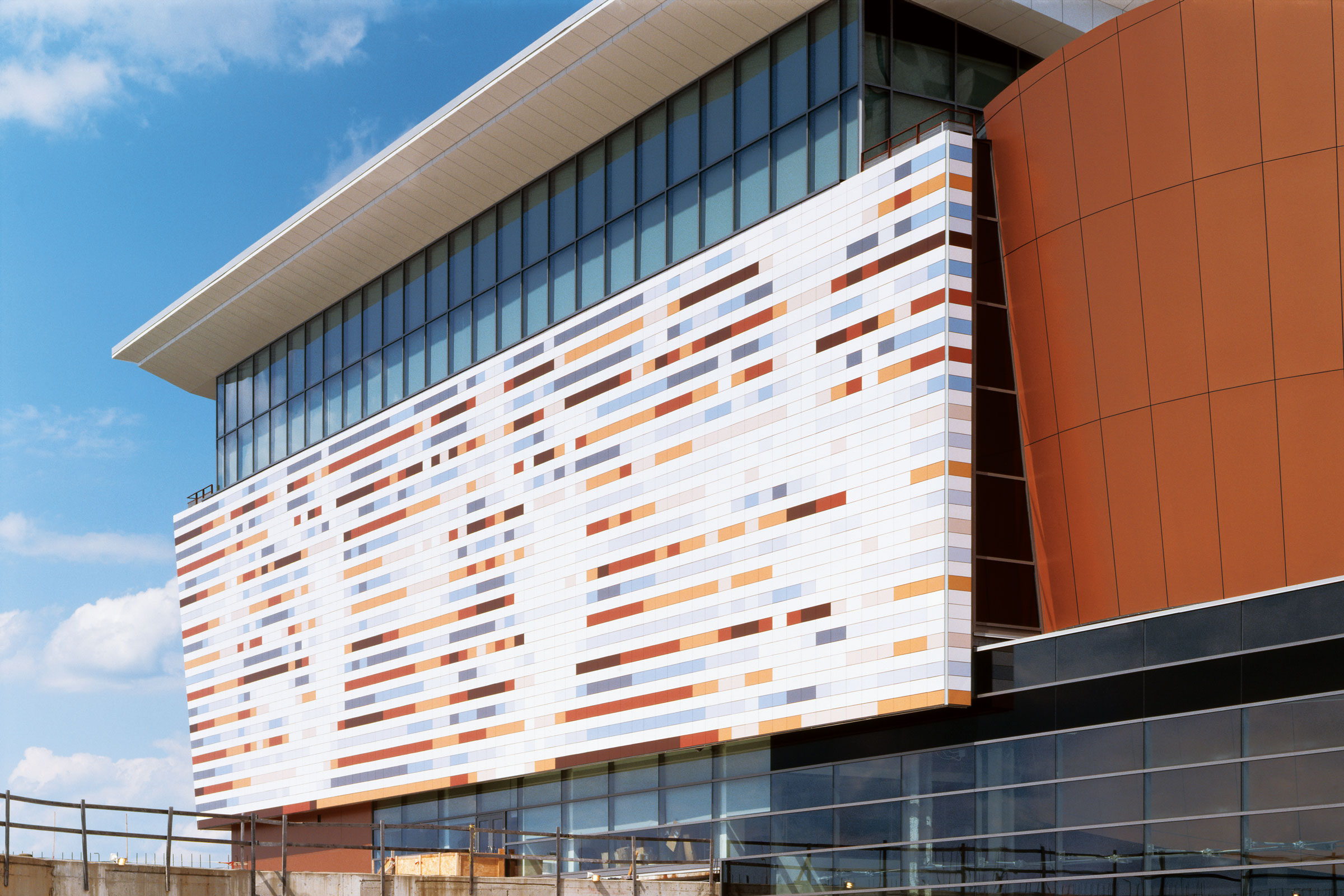
The KerAion system is seen on the Muhammad Ali Center in Louisville. Photo by Daniele Domenicali
Whether your main consideration is cost efficiency or excellency in design, ceramic facades offer a wide range of benefits to builders and operators. Because ceramic is more lightweight than competing materials, it’s quicker and less expensive to transport and install. And architects prefer working with terra-cotta due to its flexibility and nearly unlimited design potential.
“The diversity of color and texture options gives architects the freedom to focus on all sorts of complexities in design,” Burling says. From an operational perspective ceramic facades are non-flammable, resistant to chemicals, and impervious to environmental pressures. To further improve on these qualities, Agrob Buchtal developed the innovative Hytect surface coating that significantly reduces cleaning expenses by preventing the formation of algae and other microbes. “Once the surface gets wet, the water reacts with the Hytect coating and washes dirt and other particles right off of the facade,” Burling says.
Sustainable Features
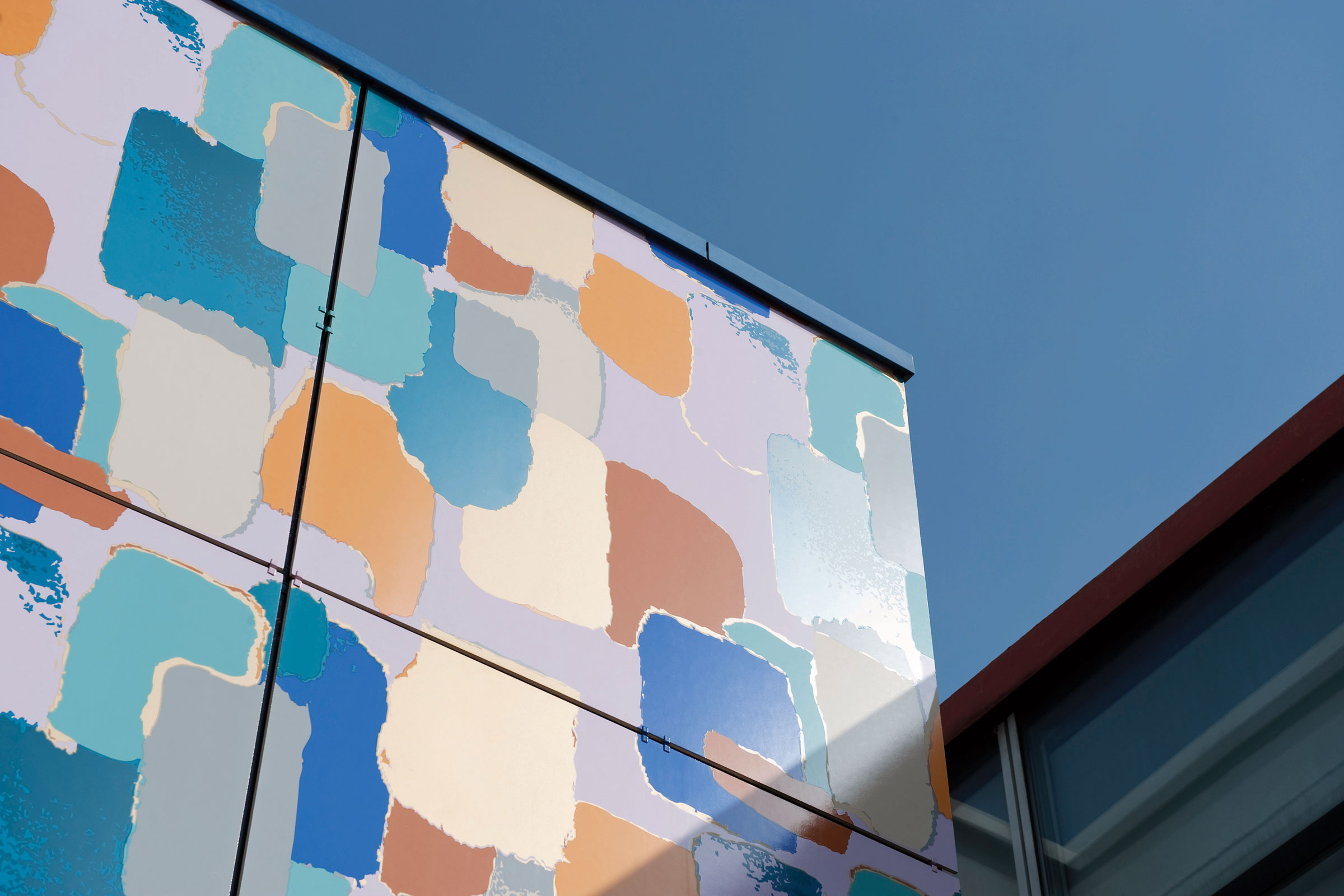
Groninger Museum in the Netherlands uses the KerAion system and clamp fastening in its design.
Courtesy of Koninklijke Tichelaar Makkum
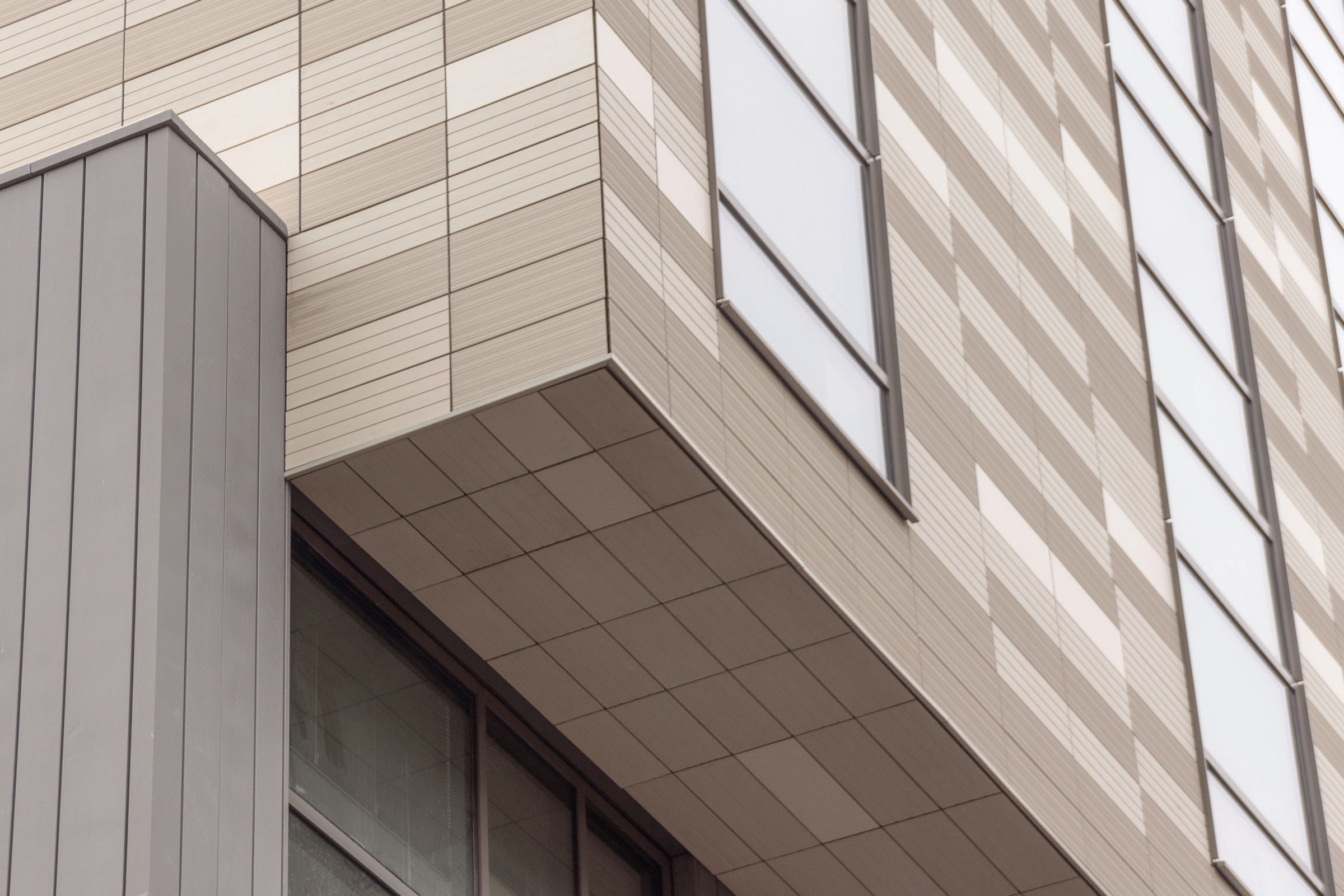
KeraTwin is also seen on the Viridian, designed by Bruner/Cott & Associates, in Boston. Photo by Fred Clements
Unlike many of the most popular building materials used today—concrete and steel come to mind—terra-cotta stands out in terms of sustainable performance across all four phases of the material’s lifespan: manufacturing, construction, operation, and deconstruction.
“Ceramic is harmless in terms of building biology,” Burling says. “It has practically an unlimited useful life and can be fully recycled.”
Ceramic cladding, when installed on the old facade, acts as an additional shell for the building, providing added benefits in terms of energy efficiency. Plus the gap between the old and new facades provides space for layers of additional insulation. “Everyone wants to go green, and we’re happy to lead the industry in that direction,” Burling says.

